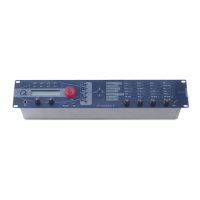MIDI Control – System Exclusive Data Transmission
141 Waldorf microQ User´s Manual
• If Sound is selected, the current Sound program will be sent. When used in
Multimode, the Sound program of the currently selected instrument will be sent.
• If Multi is selected, the current Multi program will be sent. The Sound programs that
made up the Multi are not sent. This function is only available in Multimode.
• If Arrangement is selected, the current Multi program with all its used Sound and
Pattern programs is sent. Use this function to dump all settings of a Multi. This function
is only available in Multimode.
• If Drum Map is selected, the current Drum Map will be sent. When used in
Multimode, the Drum Map of the currently selected instrument will be sent.
• If Global Data is selected, all Global parameters are sent.
• If all Sounds is selected, all Sound programs of the microQ are sent.
• If all Multis is selected, all Multi programs of the microQ are sent.
• If all Drum Maps is selected, all Drum Maps of the microQ are sent.
• If *All* is selected, all Sounds, Multis, Drum Maps and the Global parameters are sent.
3. Press Shift + Global/Utility again to activate the dump.
Depending on the selected type, the dump may take some time. The microQ cannot be played
during this time.
Receiving System Exclusive Data
You are not required to activate a special receive mode of the microQ in order to receive system
exclusive data through MIDI. However, there are a few things you should check before you transmit
system exclusive data to the microQ:
• Make sure none of the microQ’s programs is in Edit mode. The edit buffers might be
cleared or overridden depending on the type of dump that is sent to the microQ.
• Check out the parameter SysEx ID. Data transmission will only be executed successfully if
if the sender and receiver settings match.
As soon as the dump from the sending device is activated, the microQ will receive data and store
these in its memory.
If a single Sound, Multi, Drum Map or Arrangement dump is received, it is temporarily stored in its
respective edit buffer. If you want to keep such edits, you have to store them. Otherwise they are
when you switch the microQ off.
The microQ is able to receive a sound dump from the Waldorf Q series via MIDI. According to
that please refer to the chapter „System Exclusive Data Transmission“ in the Q manual.

